St Albans Road Bettespool/Dolittle Mill
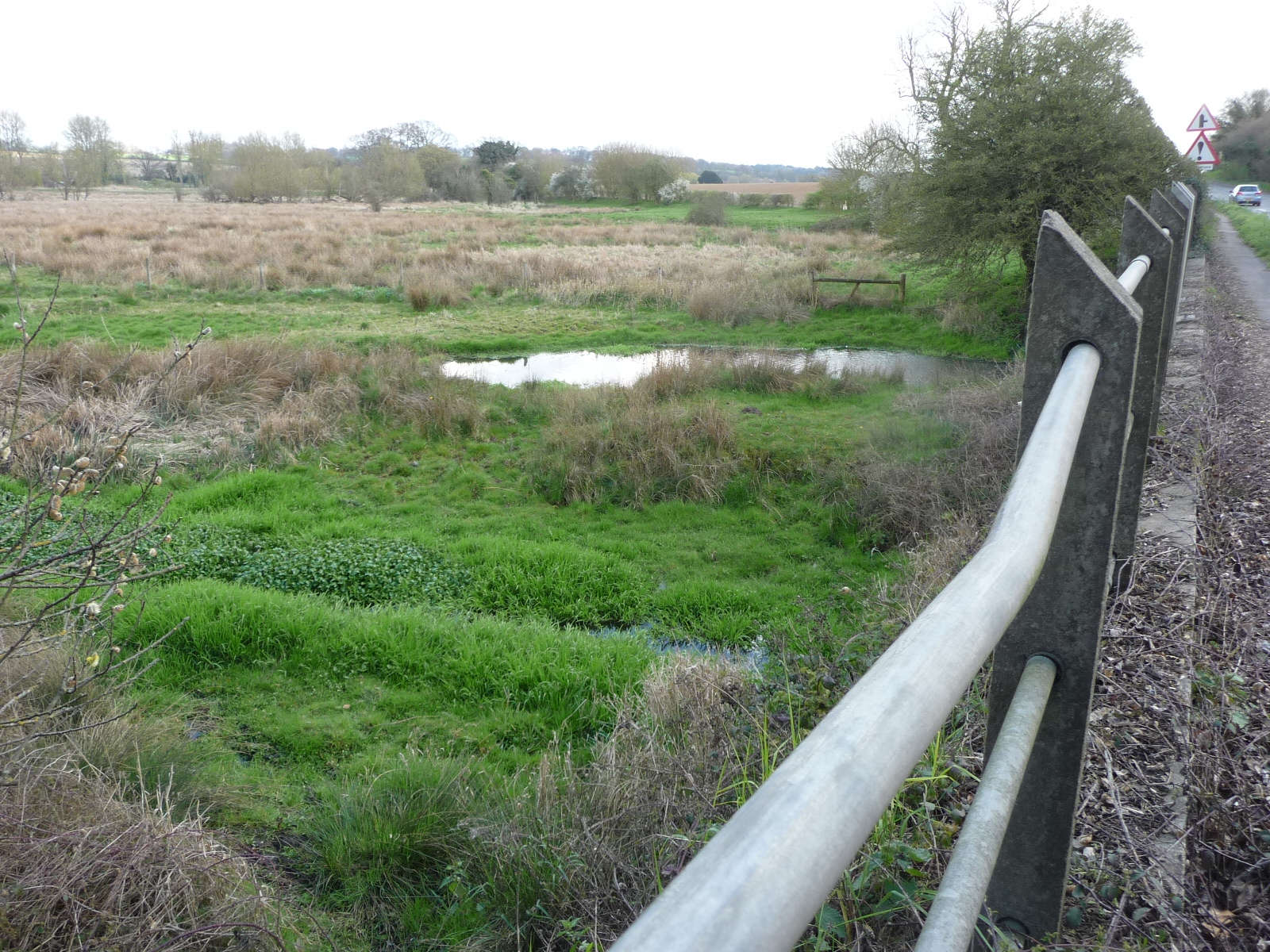
Redbourn had two Saxon mills possibly built by Aegelwine le Swarte who gave them to the Abbott of St Albans around 1042/7. Thus, at the Conquest, the present Redbournbury Mill situated near to Redbournbury House and Redbourn Little Mill (Bettespool/ Do-little) were cited in the Doomsday Survey as being worth 26 shillings.
The latter was also referred to as a malt mill – thus perhaps linking it with Redbourn Priory or the inns and breweries of Redbourn itself. The mill was served by a mill pond formed by damming up the River Ver which crosses under Watling Street about a half mile south of the village. The mill was on the right hand side of the road (looking towards Redbourn) and the mill house and barn were (and are) situated on the left hand side of the road.
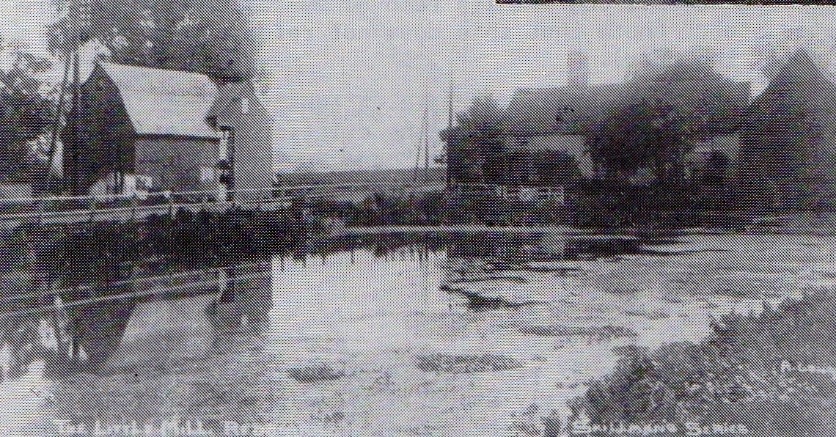
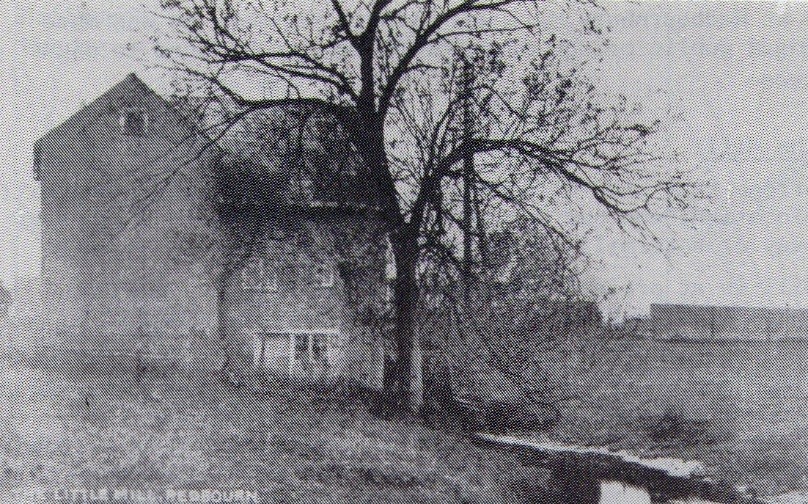
The early mill was probably made of wood and was thatched. The mill appears in records from 1344 when a five year old girl fell into the water and under the wheel, but was saved, it was believed at the time, by the intervention of St Alban. It is mentioned again during a dispute between the Priory in Redbourn and villagers of Flamstead over common rights on the Heath. After the Flamstead men blocked the route from the Abbey to the Priory, the Prior purchased from the Commoners of Redbourn, land for another way through which ran from ‘Heybrigge Lane’ (Chequers Lane) to the ‘Mill of Betlepol’ In 1381, a group of villagers, returning from St Albans where they had been demonstrating in the upheavals which became known as ’The Peasants Revolt’ gathered at Bettespool Mill and attempted to remove the banks which protected the Prior’s new safe route. The last mention of the mill in the monastic records is in 1537 ( two years before the Dissolution ), when William Horne was given a 50 year lease of Bettespool and Redbournbury mills for an annual rent of £8. At the dissolution all freeholds of monastic property went to King Henry VIII, and was then passed in 1550 to the Princess Elizabeth in her father’s will and on her death to James I. Between 1609 and 1650, Edward Ferrers and Francis Phillips were granted the legal title to the two Redbourn mills along with it about 200 others. They held Redbourn in trust for Sir Peter Vanloor. The mills were passed down through the Vanloor family until, in 1650. The title to Bettespool Mill was then purchased by Thomas Heydon, a miller, of Hemel Hempstead, by 1653, Sir Harbottle Grimston of Gorhambury had purchased the mill. It remained in their possession until the 1930’s, when the 4th Earl of Verulam put a lot of the family estate up for sale, it was bought by the Crown and remained in their hands until 1987 when it was bought by private owners.
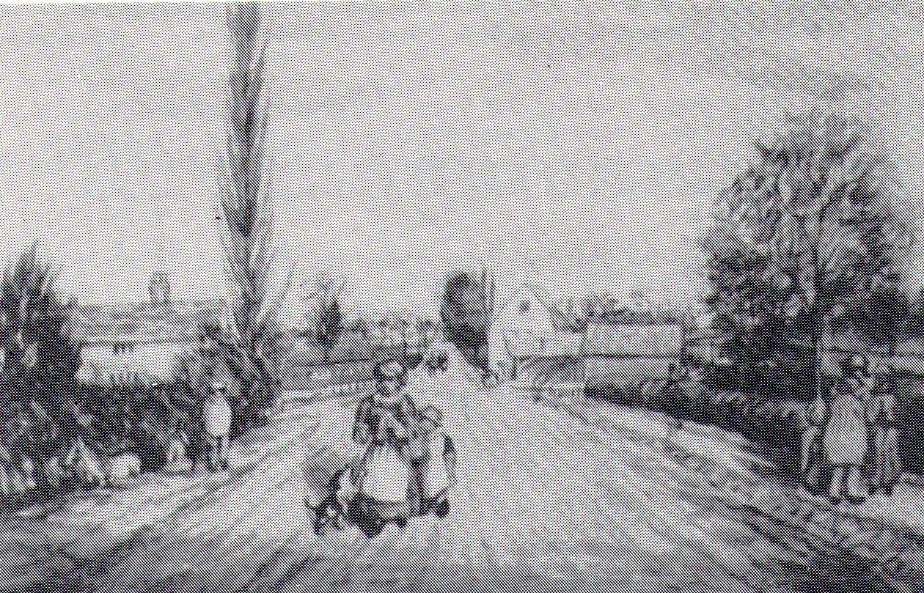
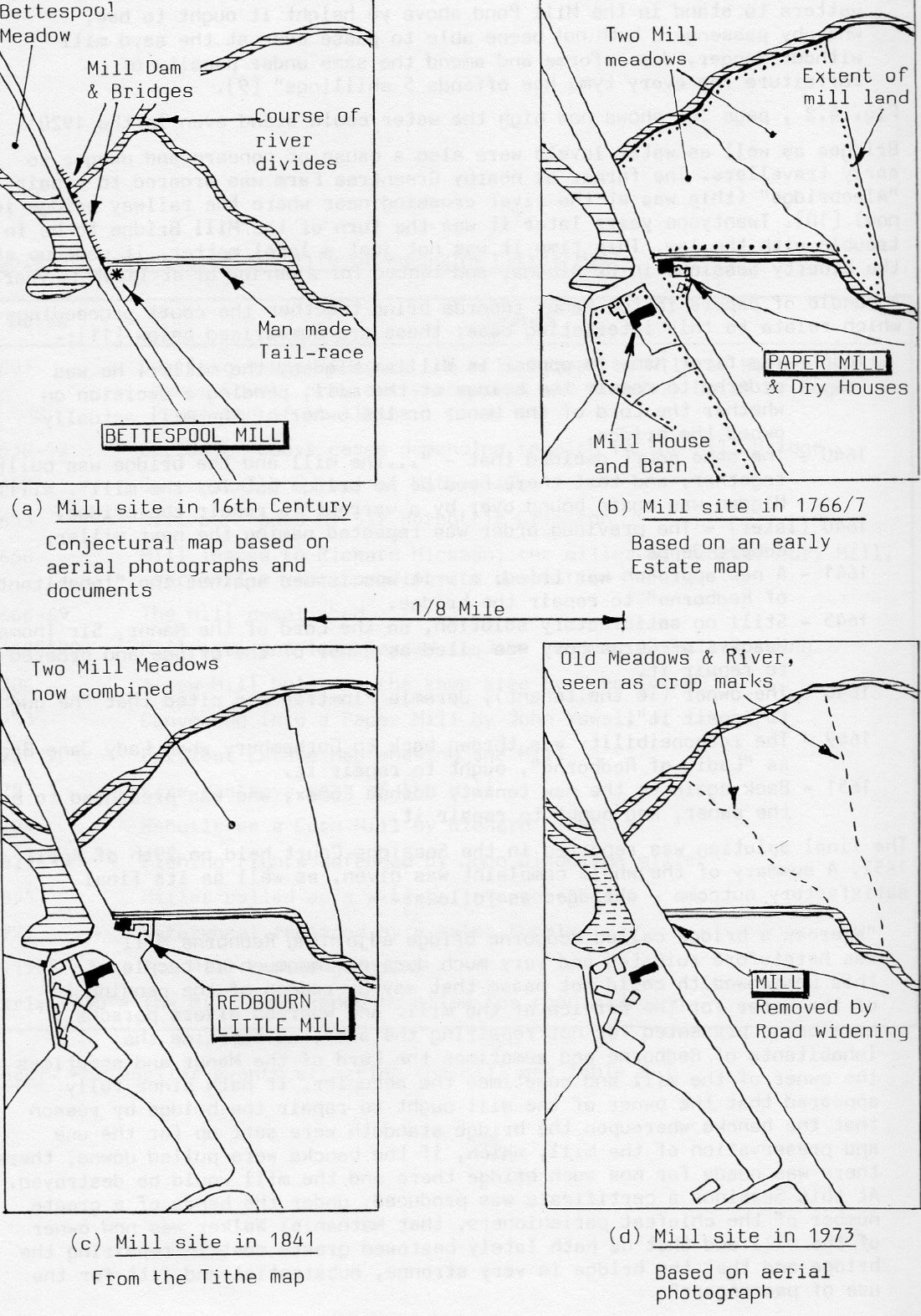
Of the millers who worked the mill a number are recorded. William Norkett (1622), William Higden (1638 and 1640) Robert Jepps (1642) and William Weeden (1652- 1665) are amongst the earliest ones known. By this time, the mill consisted of ‘two small rooms and a little house’ (Commonwealth Survey of Mills 1650), it was valued at £13. The miller’s house opposite the mill was probably built by Roger Pemberton of St Albans. There exist in the Manor court records, a number of instances where the millers were found responsible for poor upkeep of the mill bridge across the road but they were reluctant to pay but finally in 1652 Nathaniel Walker accepted responsibility and considerably strengthened the bridge. The mill itself was in a bad state and in 1666 Sir Harbottle Grimston ordered it demolished but documents suggest that it was still standing in 1669 in a derelict state. The land was used as a small holding by John Legge. By 1706 Thomas Dagnell had been charged to rebuild the mill on the old site one which had two bays and could contain a corn mill and a flour mill, Grimston paid £150 toward the cost. The complex ( on both sides of the road ) consisted of a stable, a hay barn, carthouse, a granary on five pairs of stones, and a beer house.
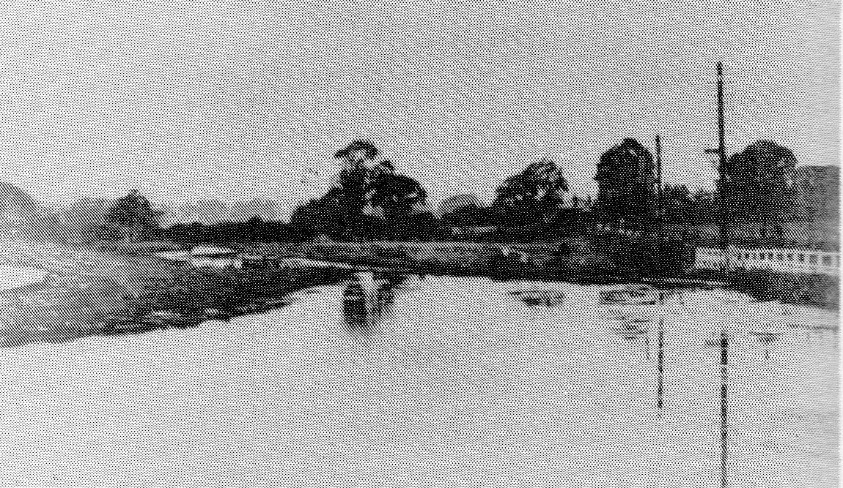
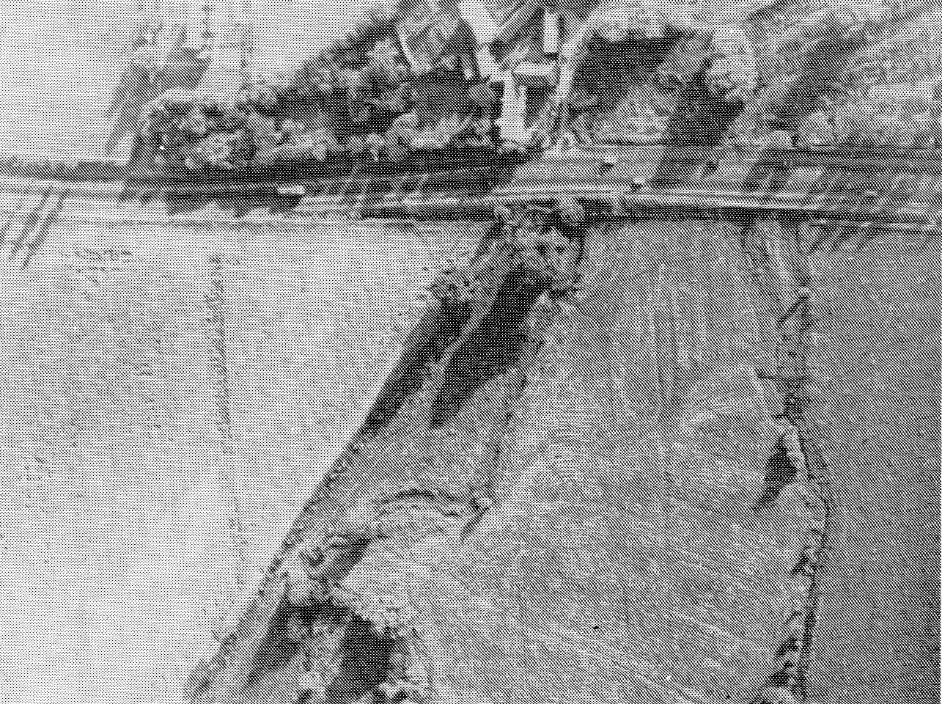
In 1753, a stationer, John Vowell leased the mill and it became a paper mill. At this time, rags were collected, sorted and washed and left to rot, then cut up and pounded in a mortar by a water driven hammer. The result is a pulp. This was put into a vat into which a sieve was dipped repeatedly until a sheet of paper emerged. To make white paper, rags had to be bleached – one Henry Law is listed as owning a ‘Manufactory for bleaching coloured rags’ in the village. The actual work of running the mill was undertaken by the Stratton family from 1753 until 1783 when there was a fire at the mill.
The mill was rebuilt in 1784 by Richard Flintman in the form the early photos show, and more land went with the holding. Indeed by 1841, it consisted of 120 acres and was known as ‘New Jeromes Farm’ (by the end of the 19th century it was part of Beaumont Hall Farm). The main family of millers in the 19th century were the Dixons who also had a shop in the village and later lived at Beaumont farm, having mills in St Albans and Wheathampstead as well. The milling trade was declining in the 1920’s and though a water turbine was installed at the mill in 1926 it closed in 1927.
The building briefly saw use again during the Second World War as an engineering works, but then again fell vacant, to be demolished in the early 1950’s as part of a road widening scheme.
Dolittle Mill House
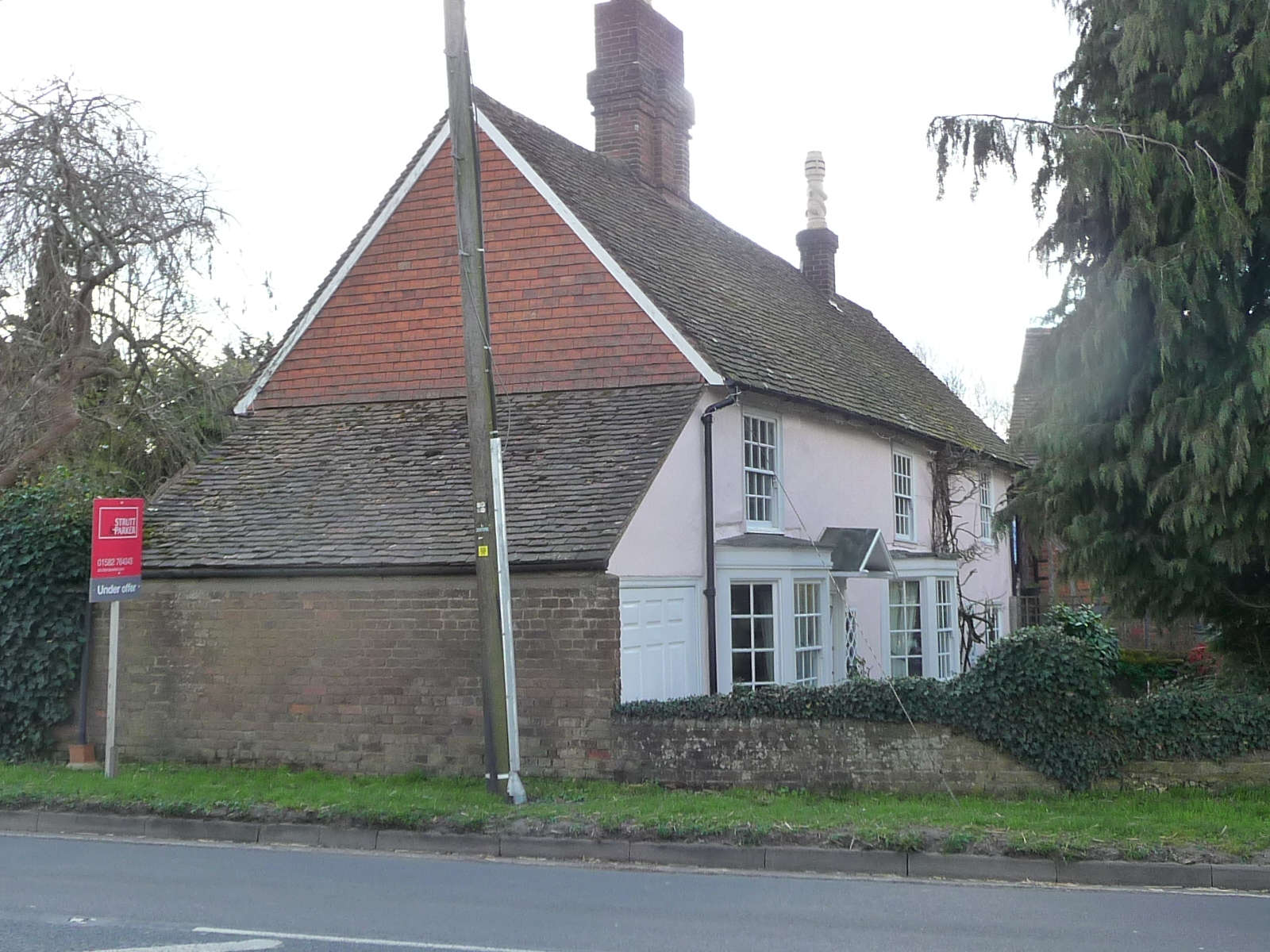
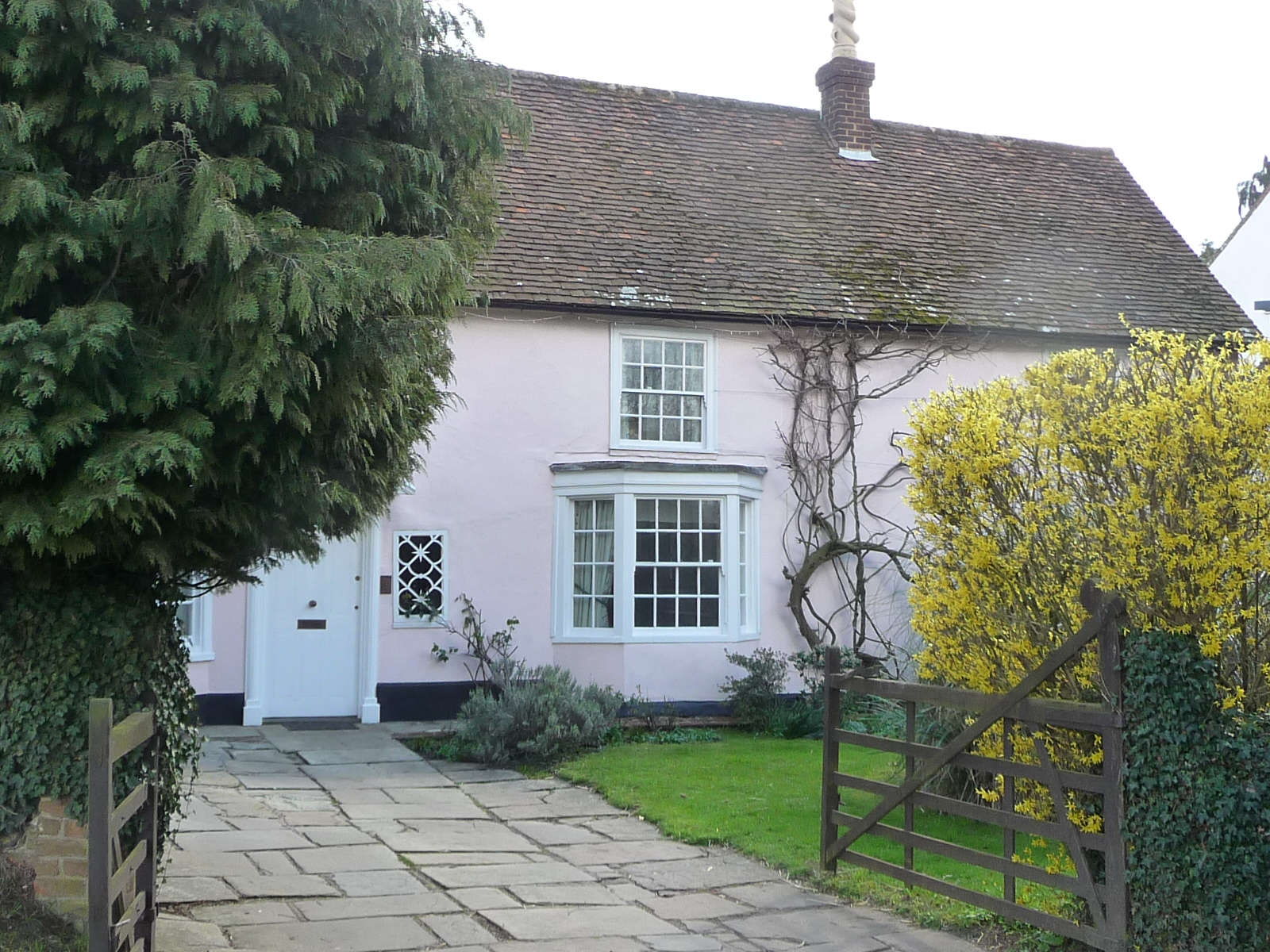
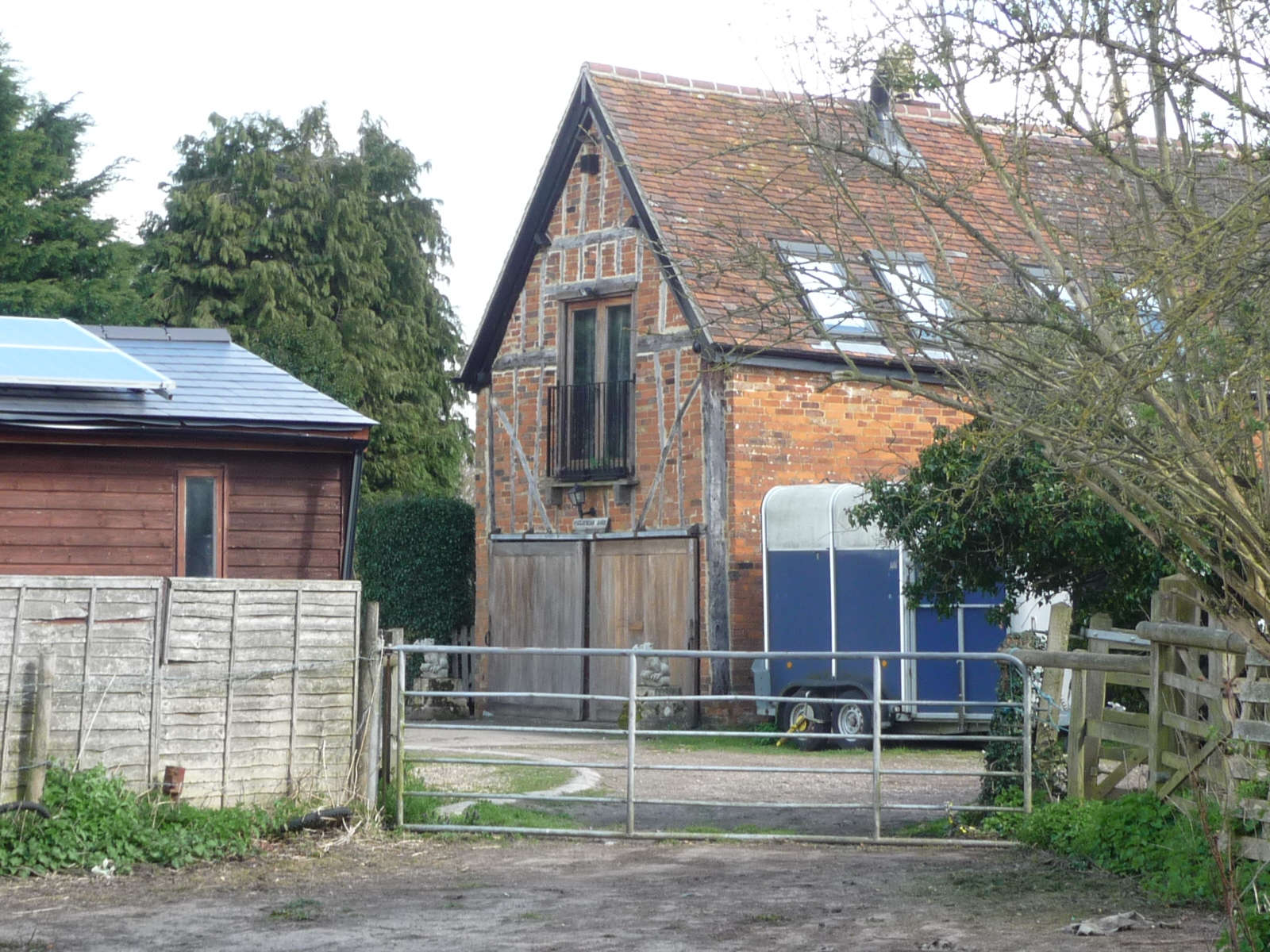
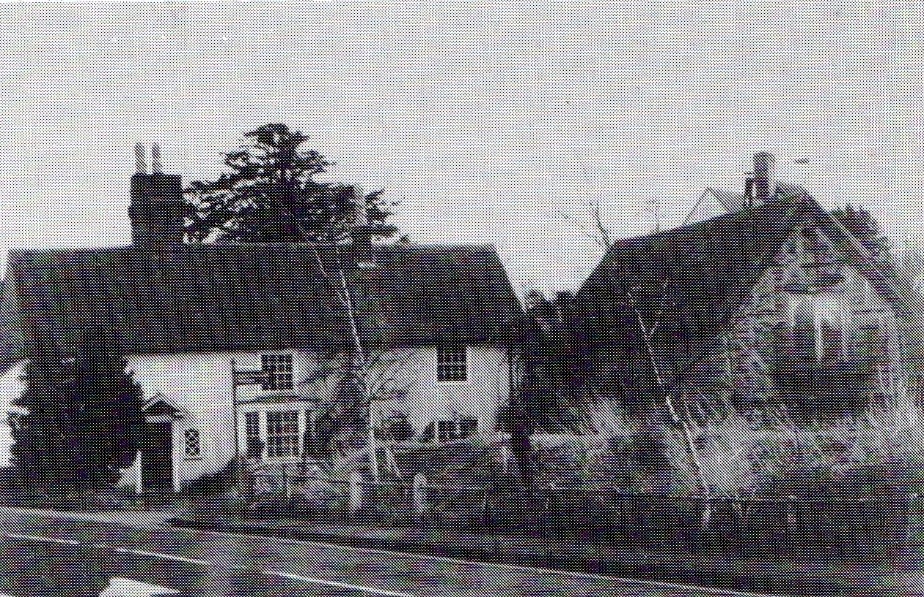
House, formerly a mill house. It has a 17th century timber frame and the front was colour washed pilaster in the mid 19th century. The gable end facers the road. the house has two stories and there is a plain tile roof with wood eaves soffits. The first floor has sash windows and there is an interesting door on the left with six reeded panels. The porch is an open pediment with one thin fluted column. There are sash bays windows either side. The large chimney is 17th century with two square shafts.
The house was probably built in the early 1700’s by Roger Pemberton.
The barn has now been converted into another house and dates from the 18th or early 19th century. It has an exposed timber frame with a 20th century red brick infill. It is two stories and has three bays.